The Long War Journal (Site-Wide) |
- Analysis: Former US Marine killed by Islamic State's Tripoli 'province'
- Hezbollah kills two Israeli soldiers in anti-tank missile attack
- Video shows Hezbollah Brigades convoy transporting American M1 tank
- 'Foreigners' among 7 jihadists killed in US drone strike in Pakistan
- Islamic State is forced from Kobane
- Islamic State appoints leaders of 'Khorasan province,' issues veiled threat to Afghan Taliban
- Islamic State assaults Iraqi border post near Jordan
- Analysis: Islamic State sleeper cells a threat to Turkey
|
Posted: 28 Jan 2015 12:33 PM PST
Note: A version of this article
was first
published at The
Weekly Standard.
Two gunmen entered the Corinthia
Hotel in Tripoli Tuesday morning. When their shooting rampage was over, at least ten
people had been killed. For jihadists in Libya, the hotel was
an inviting target. Foreign diplomats, Western tourists and officials from
Libya's rival governments are known to frequent it. Indeed, the victims were
five foreigners, including an American, and five Libyans.
The American killed in the attack has been
identified as David Berry. According to The New York Daily News,
Berry is a former US
Marine who worked as a security contractor for Crucible, LLC.
The company's web site says
that Crucible "provides high-risk environment training and global
security solutions to employees of the U.S. Government, NGOs, and
multinational corporations who live and work in dangerous and austere
locations worldwide." The company has not identified the client Berry
was working for at the time of his death.
In the past, it could take weeks
or months for a terrorist organization to take credit for an attack.
Sometimes there is no claim of responsibility at all. Before the siege of the
Corinthia Hotel had even been ended, however, a group calling itself the
Islamic State's province in Tripoli claimed on Twitter (see image above) that
the attack was the work of its members. In short order, the group posted
photos of the two gunmen (seen on the right), identifying one as a Tunisian
and the other as being from the Sudan.
The Islamic State, an al Qaeda
offshoot that controls much of Iraq and Syria as a self-declared
"caliphate," announced the
establishment of several "provinces" in North Africa
and the Middle East in November of last year. The group's provinces are more
aspirational than real, as none of them controls much territory.
Abu Bakr al Baghdadi, who heads
the Islamic State, argues that all other jihadist groups, and indeed all
Muslims, in his provinces' territories owe him their loyalty now that the
caliphate has expanded. From Baghdadi's perspective, this means that more
established jihadist groups, such as al Qaeda in the Arabian Peninsula (AQAP)
in Yemen, are now null and void. AQAP, which rejects Baghdadi's assumed role
as "Caliph Ibrahim I," naturally takes offense to the Islamic
State's proclamations. An already heated rivalry became even testier after
the Islamic State's announcement in November.
Baghdadi's international sway is
often exaggerated. The Islamic State has failed to usurp the power of
organizations such as AQAP and Al Qaeda in the Islamic Maghreb (AQIM), both
of which remain loyal to al Qaeda emir Ayman al Zawahiri. AQIM and its allies
maintain a strong presence in Libya. And we cannot be sure how much of an
operational relationship there is between the Islamic State's headquarters in
Iraq or Syria and the groups that fight in Baghdadi's name in Libya and
elsewhere.
Regardless, the Islamic State's
international network, and the threat it poses to American interests, is
real. The establishment of "provinces," which was intended to cut
into al Qaeda's dominant share of the global jihadist market, has had some
success.
In fact, Berry is not the first
American victim of the Islamic State's provinces.
Late last year, the Islamic
State's province in the Sinai claimed
responsibility for the death of a petroleum worker named
William Henderson. The Sinai province was formed by
a faction of another group, Ansar Bayt al Maqdis (ABM), which
split over the rivalry between al Qaeda and the Islamic State. Henderson was
actually killed in August 2014, before ABM's Sinai presence officially swore
allegiance to the Islamic State's Baghdadi. But there are credible reports of
cooperation between ABM and the Islamic State before their formal alliance.
The Sinai province has launched a
string of attacks already this year, focusing on Egyptian security forces and
others.
Earlier this week, Islamic State
spokesman Abu Muhammad al Adnani, announced the
formation of a province in the "Khorasan," a
geographical region that covers Afghanistan, Pakistan and parts of
neighboring countries. A former Pakistani Taliban leader was named as the
Khorasan province's "governor." His deputy
governor is a former Guantanamo detainee known as Abdul Rauf
Khadim.
The Islamic State's Khorasan
province is not the strongest jihadist organization in its home turf. The
Taliban, al Qaeda and their allies have a much firmer foothold in South Asia.
And the Khorasan province's leaders include jihadists who lost internal power
struggles in their previous organizations, paving the way for the Islamic State
to garner their allegiance. Khadim, for example, was once a senior Taliban
commander. After Khadim was forced out of the Taliban, Khadim and his
supporters threw their lot in with Baghdadi. It wasn't the pull of the
Islamic State that led Khadim to switch allegiances, so much as the Taliban's
push, which was caused by Khadim's disagreements with his fellow jihadists.
Still, Khadim has been an
effective commander and the Khorasan province is already active in southern
Afghanistan. There have been skirmishes between Baghdadi's followers and
their rivals in the Taliban, which is clearly gunning for Khadim. One report
says that the Taliban has captured Khadim and dozens of his followers, but
that has not been confirmed.
In the months to come, the Islamic
State's provinces will claim more victims, including perhaps more Americans.
|
|
Posted: 28 Jan 2015 12:55 PM PST
Hezbollah killed two Israeli
soldiers and wounded seven more in an attack on a armored unit that was
patrolling near Mt. Dov at the border between Israel, Lebanon, and Syria. The
group has claimed credit for the attack.
"The IDF has confirmed that
during today's attack, Hezbollah militants fired 5 anti-tank missiles at the
patrolling force near Mt. Dov. One soldier and one officer," a company
commander, "were killed," the Israeli
Defense Forces stated on its blog. "Seven additional IDF
soldiers were injured, two of them moderately. The injured soldiers were
evacuated to a hospital."
"The IDF responded to attacks
with combined aerial and ground strikes at Hezbollah operational
positions," the Israeli military stated.
According to
Reuters, a Spanish peacekeeper was killed during retaliatory
air and artillery strikes against Hezbollah. It is unclear if any of the
group's fighters were killed.
Hezbollah claimed the attack via
Al Manar, the the group's official news outlet.
"At 11:25 this morning, the
Quneitra Heroic Martyrs group, of the Islamic Resistance, targeted an Israeli
military convoy in the Shebaa Farms composed of several vehicles transporting
Zionist officers and soldiers," the statement
said. "Several vehicles were destroyed, and casualties
were caused among the enemy ranks."
Several senior Lebanese government
officials, including the prime minister, the speaker of parliament, and the
foreign affairs minister, praised the
attack, according to Al Manar.
Today's assault was likely
launched in retaliation for the deaths of six Hezbollah operators, including
the son of slain leader Imad Mughniyah, and a Qods Force general and six
other officers and advisers in an Israeli airstrike. The thirteen Hezbollah
and Qods Force commanders and members were scouting the Quneitra area in
Syria on Jan. 18 when Israeli aircraft launched an attack, killing them all.
[See LWJ reports,
Hezbollah
commanders killed in suspected Israeli airstrike, and Senior Qods
Force general killed in suspected Israeli airstrike.]
|
|
Posted: 28 Jan 2015 08:38 AM PST
American-made M1
Abrams shown flying the Hezbollah Brigades' flag while being transported by
the group.
A video uploaded to YouTube
appears to show a large Hezbollah Brigades convoy transporting weapons,
troops, and armored vehicles to the front to fight the Islamic State.
Several American-made military vehicles,
including an M1 Abrams tank, M113 armored personnel carriers, Humvees, and
Mine-Resistant Ambush Protected vehicles (MRAP), as well as Iranian-made
Safir 4x4s and technicals (armed pickup trucks) are in the convoy.
The Hezbollah Brigades is US-designated
foreign terrorist organization that has been involved in killing American
soldiers in Iraq.
At one point in the video, a
transport truck is shown carrying an M1 Abrams tank. The Hezbollah Brigades'
flag is flying over the tank and other US-made vehicles. The M1, which is the
main battle tank of the US Army, has been sold to and utilized by the Iraqi
Army.
The screen shot above marks the
first evidence of Iranian-backed militias having M1 tanks at their disposal.
It is unclear if the Hezbollah Brigades seized the M1 from an Iraqi Army unit
that dissolved in the face of the Islamic State's onslaught, or if the Iraqi
military gave the militia the tank. Several Iraqi M1s have been photographed
after being destroyed by the Islamic State.
The Hezbollah Brigades, or Kata'ib
Hezbollah, receives funding, training, logistics, guidance, and material
support from the Qods Force, the external operations wing of the Revolutionary
Guard Corps. The radical militia has joined the fight against the Islamic
State in Iraq. In addition, other Iranian-supported Shia militias, such as
Asaib al Haq, Badr Organization, and Muqtada al Sadr's Promised Day Brigades
have played a prominent role on the battlefield. these militias have played
key rolls in securing Amerli,
Baiji,
and Jurf al Sakhar,
and are on the forefront of the fighting in Diyala province.
The United States designated the
Hezbollah Brigades as a terrorist organization in July 2009.
On the same day, the US added a Qods Force commander who supported the
"Special Groups," such as the Hezbollah Brigades, to the list of
specially designated global terrorists. The so-called Special Groups are
responsible for the deaths of hundrends of US and allied soldiers between
2004 and 2011. [For more information, see LWJ
report, US sanctions
Iraqi Hezbollah Brigades and Qods Force adviser.]
The organization has also been
responsible for several American deaths during the war in Iraq. The US State
Department described the Hezbollah Brigades as "a radical Shia Islamist
group with an anti-Western establishment and jihadist ideology that has
conducted attacks against Iraqi, US, and Coalition targets in Iraq."
The group has been directly linked
to the murder of two UN employees in November 2008. Additionally, the Iranian-backed
extremists conducted attacks against US and Iraqi forces, using
explosively-formed penetrators and improvised
rocket-assisted mortars, which have been described as flying
improvised explosive devices.
Despite this, the group was
assisted by US airstrikes when Iraqi and Kurdish forces broke the siege of
Amerli in Salahaddin province. The US military said it launched airstrikes
against the Islamic State outside of the town "[a]t the request of the
Government of Iraq" and "in support of an operation to deliver
humanitarian assistance to address the humanitarian crisis and protect the
civilians trapped in Amerli." [See LWJ
report US aided
Hezbollah Brigades in breaking Islamic State siege of Iraqi town]
Video of Hezbollah Brigades
convoy:
|
|
Posted: 28 Jan 2015 09:06 AM PST
Several foreign fighters were
among seven suspected jihadists who were killed in the latest US drone strike
in Pakistan's Taliban-controlled tribal agency of North Waziristan.
The CIA-operated, remotely piloted
Predators or Reapers fired two missiles at a compound and a vehicle in the
Shawal Valley, killing "seven suspected militants," Dawn reported.
"The compound was razed to
ground whereas a vehicle inside the compound was blown into pieces," the Express Tribune
reported.
Three of those killed are said to
be "foreigners," a term used to describe foreign fighters from Arab
countries or from regional groups such as the Islamic Movement of Uzbekistan
or the Turkistan Islamic Party. Al Qaeda and other jihadist groups have not
announced the deaths of any senior leaders, commanders, or operatives.
The Shawal Valley, which is
administered by Taliban commander Hafiz Gul Bahadar and spans both North and
South Waziristan, is a known haven for al Qaeda and other terror groups
operating in the region. A number of Taliban, Pakistani, and foreign
terrorist groups gather in the Shawal Valley and then enter Afghanistan to
fight US, NATO, and Afghan government forces.
The US has launched 24 drone
strikes in the Shawal Valley since September 2010. Abdul Shakoor
Turkistani, the former emir of the Turkistan Islamic Party, was
killed in a strike in August 2012; while three al Qaeda
military trainers were killed in an attack there in August
2013.
US strikes in Pakistan
Today's drone strike in North
Waziristan is the third reported in Pakistan this year. The last
attack, on Jan. 15, targeted a compound belonging to Sajna
Mehsud, a Taliban commander in South Waziristan. Two Uzbek fighters were
reported killed in the strike.
Last year the US launched 24
airstrikes inside Pakistan; 19 of those strikes took place in n North
Waziristan and four more in South Waziristan. The number of operations has
decreased since the program's peak in 2010, when 117 attacks were recorded by
The Long War Journal.
[See LWJ report, Charting the
data for US airstrikes in Pakistan, 2004 - 2015.]
The US continues to target and
kill al Qaeda and Taliban leaders in Pakistan's tribal areas despite previous
claims by Obama administration officials that al Qaeda has been decimated and
only two "core" al Qaeda leaders remain active. Al Qaeda also
remains active outside of Pakistan's tribal areas in the provinces of
Baluchistan, Punjab, and Sindh, where US drones do not operate.
|
|
Posted: 27 Jan 2015 06:35 PM PST
Flags of the People's
Protection Units and the Free Syrian Army's Dawn of Freedom Brigade can be
seen flying above Kobane.
The Kurdish People's Protection
Units (YPG) and elements from the Western-backed Free Syrian Army (FSA) have
driven the Islamic State out of the battleground city of Kobane in northern
Syria.
After beginning an assault on the
city in September of last year, Islamic State fighters were forced to retreat
after a continued campaign of resistance by the YPG, backed by elements of
the Free Syrian Army and US airstrikes. Kurdish fighters from the Kurdistan
Workers Party (PKK), a US-designated terrorist organization to which the YPG
is affiliated, and fighters from the Iraqi
Peshmerga also assisted YPG forces in Kobane.
In a statement released by the
YPG, the
organization said "For 134 days, our fighters of the
People's Defense Units (YPG)/Women's Defense Units (YPJ), men and women of
Kurdistan, lovers of freedom from four parts of Kurdistan and other
countries, came to a heavy battle, and conducted a great resistance against
Daesh's [a term for the Islamic State] terrorism."
The YPG continued by thanking those
who fought with them, saying, "At first we are grateful to our people in
Kurdistan who relentlessly supported the resistance, especially our people in
Bakur (North Kurdistan). We would like to thank the members of the Anti-Daesh
International Coalition who contributed an active support with airstrikes. We
thank the Burkan al Furat joint operations room and those brigades of the
Free Syrian Army who fought shoulder to shoulder with our forces. We repeat
our thanks to our Peshmerga brothers who were of a great support to us in
this battle."
The Burkan al Furat is an alliance
of YPG forces, elements of the Free Syrian Army, and elements from the
Islamic Front which formed
to fight the Islamic State in northern Aleppo province. The Islamic Front is
a coalition of Islamist and jihadist groups that is closely allied with the
Al Nusrah Front, al Qaeda's official branch in Syria.
US Central Command (CENTCOM),
which backed the forces fighting the Islamic State in Kobane with airstrikes,
made clear
that the fight in the area is still not decided.
"While the fight against ISIL
[Islamic State] is far from over," CENTCOM said, "ISIL's failure in
Kobani has denied them one of their strategic objectives." CENTCOM also
makes clear that around 90 percent of the city is cleared of Islamic State
fighters. While anti-Islamic State forces are largely in control of the city,
the Islamic State still controls a good portion of the countryside outside
the city.
A now deleted YouTube video
uploaded by 'Amaq News,' an unofficial Islamic State propaganda outlet, proclaimed to
show the Islamic State still controlling the Aleppo road into
Kobane as of Jan. 25. So far, no other propaganda has been released by the
Islamic State about the situation in Kobane.
Kobane central to Islamic
State and Coalition's information campaigns
The Islamic State made its push to
take control of Kobane in September. An Islamic State military force, which
included tanks, armored vehicles, artillery, and infantry, began moving on
villages (more than 350) surrounding Kobane. By the beginning of October, the
villages were under Islamic State control and Kobane was surrounded from
three sides; the fourth side borders Turkey, and it was sealed.
The US and allied forces began
launching airstrikes in Kobane on Sept. 27, 2014. The targets of the air
campaign included armored vehicles, troop concentrations, fighting positions,
ammunition dumps, command, control, and communications centers, and training
facilities. Despite the air campaign, the Islamic State advanced into Kobane
in the beginning of October.
By mid-October, more than one
third of Kobane was under Islamic State control and fighters
had advanced to the city center.
FSA and Peshmerga reinforcements
began arriving via Turkey by the end of October. By mid-November, the YPG and
its allies launched their counteroffensive, and retook the city center. On
Jan. 23, after more than two months of heavy fighting, the YPG
controlled 70 percent of Kobane and forced the Islamic State
to withdraw the bulk of its forces from the city.
Both the Islamic State and the US-led
Coalition have invested significant resources during the battle for the
Kurdish enclave. The town, while of little strategic significance, came to
symbolize the Coalition's fight against the Islamic State in Syria.
The US-led Coalition has launched
606 airstrikes on the Islamic State in Kobane between Sept. 27, 2014 and Jan.
20, 2015, according to data compiled by The
Long War Journal and Military
Edge. That represents more than 71 percent of the total number of
coalition airstrikes in Syria during that timeframe.
The Islamic State has also
emphasized the fight in Kobane. In the past the jihadist group has been keen
to promote its successes in the area. The Islamic State has even used John
Cantlie, a captured British reporter, to counter claims that it was losing
ground in October 2014. [See LWJ
report, Islamic State
uses British hostage in propaganda video to rebut Western, Kurdish claims.]
The Islamic State has also poured
significant resources into Kobane. While no official estimate of the number
of its fighters killed has been provided, it is likely in the hundreds based
on press reporting. And the Islamic State has also lost some key local
commanders during the fighting, including two Saudis known as Sultan al
Safri al Harbi and Sheikh Othman
al Nazeh.
US Central Command press releases
also indicate that scores of Islamic State tanks, armored vehicles, and
artillery pieces were destroyed during the fighting.
It is unclear what the impact of
the loss of Kobane will have on the Islamic State. The jihadist group has
made advances in other areas of Syria and in Anbar province, Iraq during the
battle near the Turkish border, indicating that despite taking casualties and
the destruction of a number of its armored vehicles, the group has not spent
its entire force and can remain on the offensive elsewhere.
Videos from Kobane
Video showing Kurdish forces
celebrating in Kobane:
Another video showing Kurdish forces celebrating in Kobane:
Video showing the FSA group Dawn of Freedom Brigade celebrating
with Kurdish forces:
Video showing the YPG flag flying over Kobane:
|
|
Posted: 27 Jan 2015 02:13 PM PST
An organizational
overview of the Khorasan Shura. The Islamic State has appointed Hafez Saeed
Khan as the Governor of Khorasan province.
Abu Muhammad al Adnani, a
spokesman for the Islamic State, announced the group's "expansion"
into the lands of "Khorasan" -- modern day Afghanistan, Pakistan
and parts of the surrounding countries -- and declared former Movement of the
Taliban in Pakistan (Tehrik-e Taliban Pakistan or TTP) commander Hafez Saeed
Khan as the "governor" of Khorasan province. Khan had previously
served as the Movement of the Taliban in Pakistan's emir for the tribal
agency of Arakzai.
Adnani made his announcement in a
nearly seven minute audio taped speech titled, "Say, Die in Your
Rage!" which was published on Jan. 26 2015 by the Islamic State's Al Furqan media outlet.
[For a translation of the speech, by Pieter Van Ostaeyen, see 'Audio
Statement by IS Spokesman Abu Muhammad al-'Adnani as-Shami.']
The declaration comes only a few weeks
after a conglomeration of former TTP officials formed the Khorasan Shura and
pledged bayat, or allegiance, to the Islamic State. [See Long War Journal report, Pakistani
Taliban splinter group again pledges allegiance to Islamic State.]
The Islamic State spokesman
acknowledged Khan's pledge of allegiance to Abu Bakr al Baghdadi as Commander
of the Faithful and the Caliph of Muslims, and claimed that Baghdadi had accepted
the pledge and appointed Khan as the province's governor and Mullah Abdul
Rauf Khadim as the deputy governor. Khadim, a former Guantanamo detainee and
former senior Taliban commander in southern Afghanistan, has reportedly been
operating in Helmand province on behalf of the Islamic State. [See Long War Journal report, Ex-Gitmo
detainee leads contingent of Islamic State fighters in Afghanistan.]
Adnani further urged the
"mujahideen in Khorasan" to come forth and obey the commands of
Khan and Khadim. Notably, Adnani also urged caution in his call to arms,
noting that "the factions will assemble against you and the rifles and
bayonets fixed against you will multiply." He encouraged the mujahideen
to stand firm against "factionalism and disunity" and to meet these
challenges by "unsheathing your swords and spears." Although not
clearly stated, Adnani was issuing a veiled threat to the Taliban factions,
both Afghan and Pakistani, that opposed the creation of the Khorasan Shura
and who were opposed to the Islamic State.
The Afghan Taliban movement has
been consistent in avoiding recognizing the Islamic State and its Caliph Abu
Bakr al Baghdadi since the reclusive leader of the Afghan Taliban, Mullah
Mohammad Omar, has previously held the title of Commander of the Faithful
position since 1996.
Adnani's declaration and
Baghdadi's reported approval for the Islamic State to expand into Afghanistan
and Pakistan could incite divisions within the various Taliban factions
operating in both countries. The cohesion of many Taliban factions has been
compromised over the past few years, mostly due to attrition and leadership
decapitations, as well as ideological differences and personal feuds.
|
|
Posted: 28 Jan 2015 07:54 AM PST
Islamic State fighters
shown attacking the Arkaban border post near the Jordanian border.
The Islamic State has released
photos showing its forces attacking Iraq's Arkaban border post near Jordan.
The photos were produced by the Islamic State's Wilayat (Province) Anbar and
disseminated by its supporters online.
The pictures show fighters firing
on the border post with rocket propelled grenades, small arms, and with
technicals (pickup trucks armed with heavy machine guns). At least seven
technicals are shown in the images released by the jihadist group.
Iraqi media reports that the
Islamic State attack on the outpost was repelled
by Iraqi border forces backed by airstrikes. Brigadier Saad Maan, a spokesman for the Iraqi Interior
Ministry, said that "The strength of the third regiment
in the fourth border guards foiled an attempt by Daesh [the Arabic acronym
for the Islamic State] to attack the Iraqi Arkaban Border Station near the
Iraqi-Jordanian borders and confronted the attack in coordination with the
Joint Operations which provided aerial support for the Iraqi troops."
Maan continued by
saying that three border guards were wounded in the attack,
sustaining minor injuries.
Last November, the Islamic State
attacked an Iraqi military outpost near the Trebil border complex with
Jordan. At least six Iraqi military personnel were killed or wounded in that
attack. Iraq had recaptured the Trebil crossing just days after the Islamic
State overran it in June of last year. [For more information on the attack on
the Trebil crossing, as well as the brief capture of it, see LWJ report, Islamic State
attacks Iraqi border crossing with Jordan.]
Photos released by the
Islamic State showing the attack on the Arkaban border post with Jordan can
be seen below:
|
|
Posted: 27 Jan 2015 01:33 PM PST
A leaked Turkish National Police
intelligence report reveals alarm in Ankara about potential attacks by
Islamic State sleeper cells across the country.
The police report, which was
disclosed by Jane's
Intelligence Weekly, warns of 3,000 operatives living in
Turkey who are directly linked to the jihadist organization. The report also
lists a number of vulnerable cities, including the country's political and
cultural capitals of Ankara and Istanbul.
This threat was all too
predictable. In an effort to bring down the regime of Bashar al Assad in
Syria, Turkey opened its southeastern border to a wide range of Syrian rebels
beginning in 2011. As the war has dragged on, the fighters came to include
jihadist groups like the Islamic State, which has since conquered large
swaths of Syria and Iraq, as well as the Al Nusrah Front, which is al Qaeda
official branch in Syria. Today, Turkey's 565-mile border with Syria is the
transit point of choice for the illegal sale of Islamic State oil, the
transfer of weapons to various fighting factions, and the flow of foreign
fighters to jihadist groups of all stripes.
This problem is now more than four
years old. Extremists have by now had ample time to establish infrastructure
in Turkey to facilitate this illicit activity. In the process, they have also
established cells and other logistical bases throughout the country. The
Turkish National Police now seem to acknowledge this threat.
Turkish and America media have
been reporting for months about Islamic State recruitment activity in Turkey.
For example, a report by the Turkish daily Hurriyet from September 2014
identified Islamic State activities in cities such as Istanbul and Kocaeli in
the western portion of the country, and Gaziantep, Sanliurfa, and Diyarbakir
to the east. A New York Times report also detailed
how the Islamic State was recruiting militants in Ankara, located in central
Turkey.
The anti-AKP and Kemalist
newspaper, Aydinlik, noted that Islamic State
militants were operating in other towns, such as Konya, which is known for
its conservative Islamic culture. As Newsweek explained, other
conservative pockets in Turkey, such as Dilovasi neighborhood in Ankara, are
particularly susceptible for recruitment.
One jarring metric is the raw
number of Turks who have joined the Islamic State. Just last week, Turkey's
Foreign Minister Mevlut Cavusoglu stated that there are about 700 Turkish
citizens fighting for the radical group. Without question, the Islamic
State's ideology and recent expansion are luring many conservative Turks to
fight. But financial inducements may also play a role; according to one New York Times report, the Islamic
State offers $150 a day to Turkish recruits who agree to fight.
In addition, Turkey is home to
many IS sympathizers. Ali Ediboglu, a Turkish opposition deputy, claims that
"at least 1,000 Turkish nationals are helping ... foreign fighters sneak
into Syria and Iraq to join ISIS." YouTube videos depict
Islamic State gatherings in Istanbul and demonstrations of support by Turkish
citizens for the jihadist fighters in Syria, including those with the Islamic
State. Last fall, it was reported
that some 20 people with black masks on their faces and bats in their hands
attacked an Istanbul University demonstration against IS. The group,
identified in the article as "Musluman Gencler" (Muslim Youth),
reportedly returned to campus for more attacks.
There is also reason to fear the
radicalization of Syrians living in Turkey. As a result of the civil war,
Turkey is now home to more than 1.5 million
Syrian refugees, and that number may be a low-ball estimate. Reports suggest
that the Islamic State may be targeting young men and boys in refugee camps
for recruitment.
Turkey recently had a glimpse of
what the future could hold if the Islamic State launches concerted assaults
on its territory. On January 6, a suicide bomber who attacked a police
station in Istanbul's historic district of Sultanahmet is believed to
have had ties to the Islamic State. As commentators noted, a spate of such
attacks could do irreparable damage to Turkey's vital tourism sector, and sow
fear into the hearts of Turks country-wide.
As the Janes report notes, the Islamic State also has
much to lose by attacking Turkey. Indeed, the terror group benefits greatly
from illicit oil sales to Turkey, the flow of foreign fighters, cash and
weapons over the border into Syria, and a rather permissive environment in
southeastern Turkey, where authorities don't seem terribly alarmed over the
presence of extremists. The leaders of the Islamic State are also fully aware
of the fact that Ankara has refused to play an active role in the US-led
coalition that is now bombing Islamic State fighters. In fact, Turkey has
refused to even allow its bases to be used for that purpose. The Islamic
State would like to keep it that way.
This modus vivendi notwithstanding, the existence
of Islamic State sympathizers and operatives inside the country puts Turkey
at risk. The longer the conflict plays out in Syria, the higher the
likelihood that Turkey gets dragged into it. If the Islamic State strikes
back by activating its local assets, Ankara will only have its own policies
to blame.
|
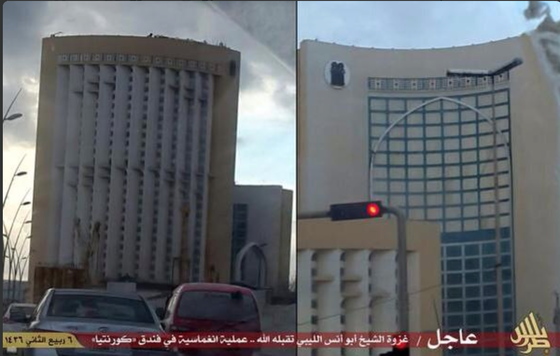
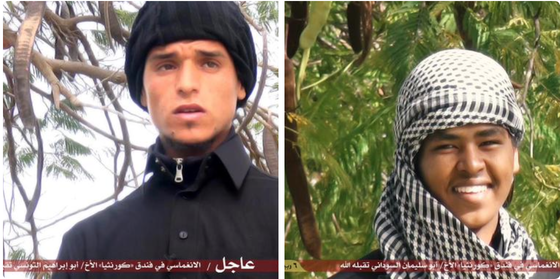
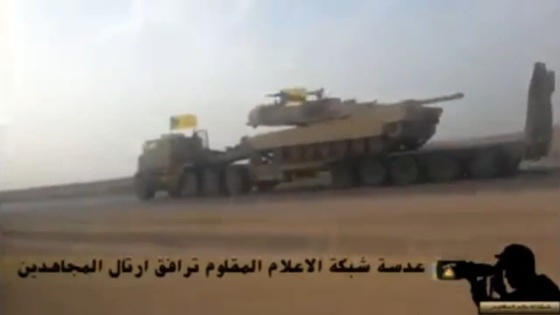
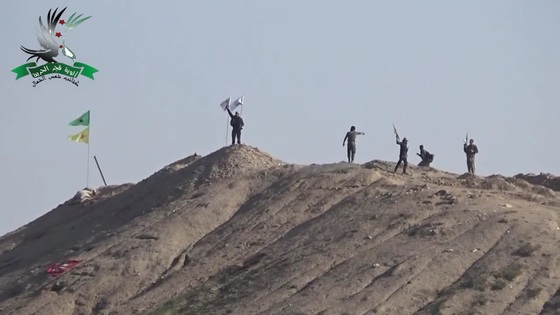
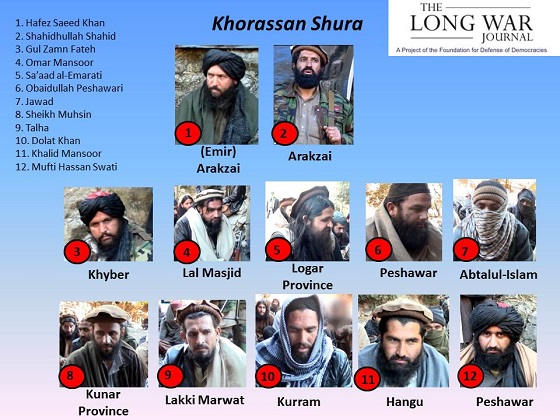
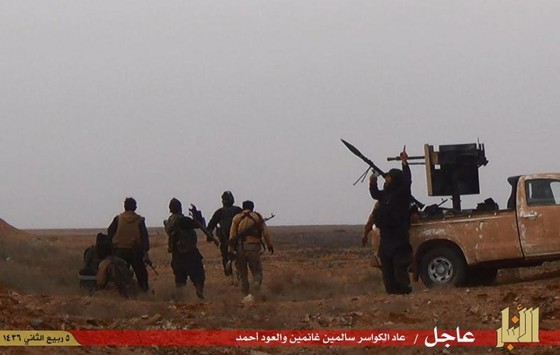
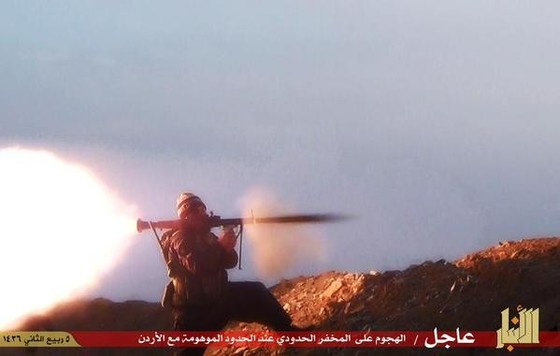
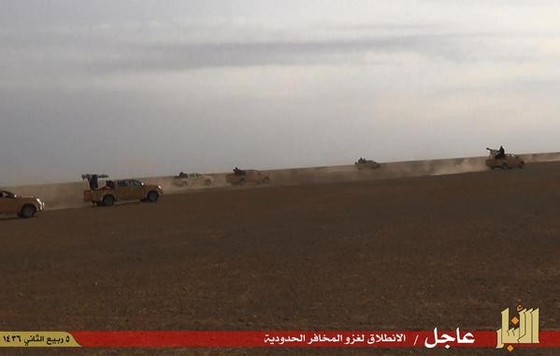
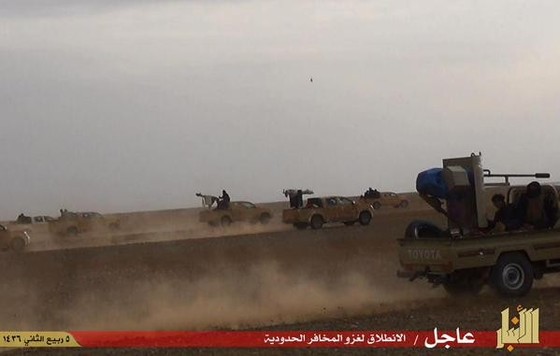
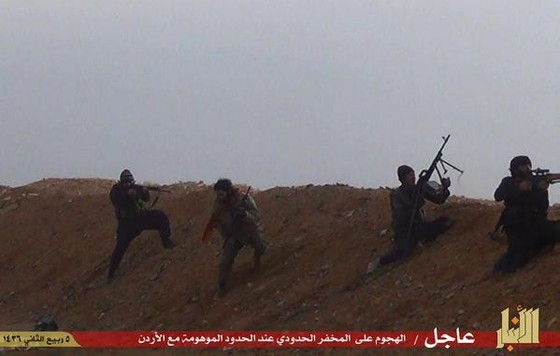
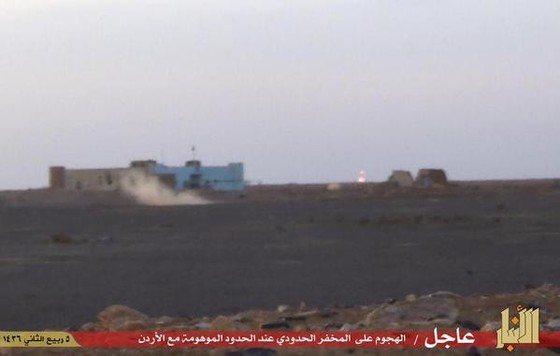
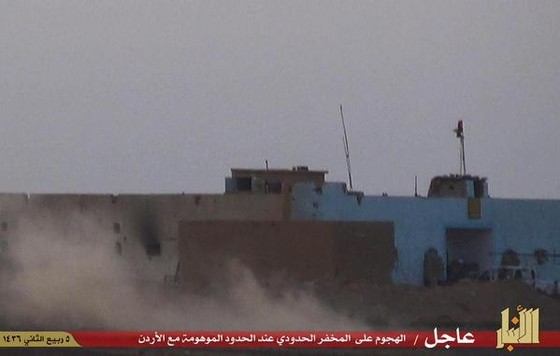






































No comments:
Post a Comment